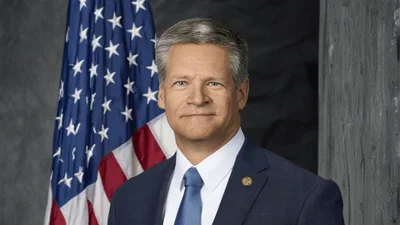The United States has imposed significant sanctions on Russia's energy sector, which is the largest source of revenue for President Vladimir Putin's war efforts. These measures target key areas in Russia's oil production and distribution chain, including two of the four largest Russian oil producers, numerous oilfield service providers, global traders of Russian oil, over 150 vessels transporting seaborne Russian oil, and an oil terminal that accepted sanctioned oil from prohibited vessels. The U.S. Department of the Treasury announced it will revoke a provision that previously allowed the intermediation of energy payments through sanctioned Russian banks.
Daleep Singh, Deputy National Security Advisor for International Economics and Deputy Director of the National Economic Council, addressed concerns about the timing of these sanctions: "Some will ask why we waited for the end of the Administration to introduce sanctions on Russian oil. It’s a fair question." He explained that successful sanctions must be sustainable and impact their target more than they harm the U.S. and global economy.
Singh pointed out that tight supply in global energy markets had previously constrained action but noted improvements in market conditions: "Oil markets are now in a fundamentally better place." Benchmark oil prices have decreased by nearly $35 per barrel since Russia began its war efforts, while average U.S. gasoline prices have fallen from approximately $4 to just over $3 per gallon.
These recent actions build upon previous financial sanctions imposed by President Biden last November against more than 50 Russian banks, including Gazprombank. The measures resulted in an immediate weakening of Russia's currency and increased borrowing costs.
Looking forward, Singh described Russia's economic outlook as bleak due to these compounded pressures: "Sanctions have sapped the most essential sources of Russia’s economic vitality."
To support Ukraine amid these developments, G7 leaders immobilized over $300 billion in Russian central bank assets shortly after Russia's invasion in 2022. President Biden and other G7 leaders committed to issuing $50 billion in loans for Ukraine using interest earned on these frozen assets. Additionally, military assistance has been increased to bolster Ukraine’s defense capabilities.
Singh emphasized that today's actions aim to provide leverage for Ukraine to negotiate a lasting resolution to the conflict while leaving room for future diplomatic efforts: "Taken together, the ultimate aim of our efforts is to provide Ukraine with leverage it needs to negotiate a just and lasting end to the war."





